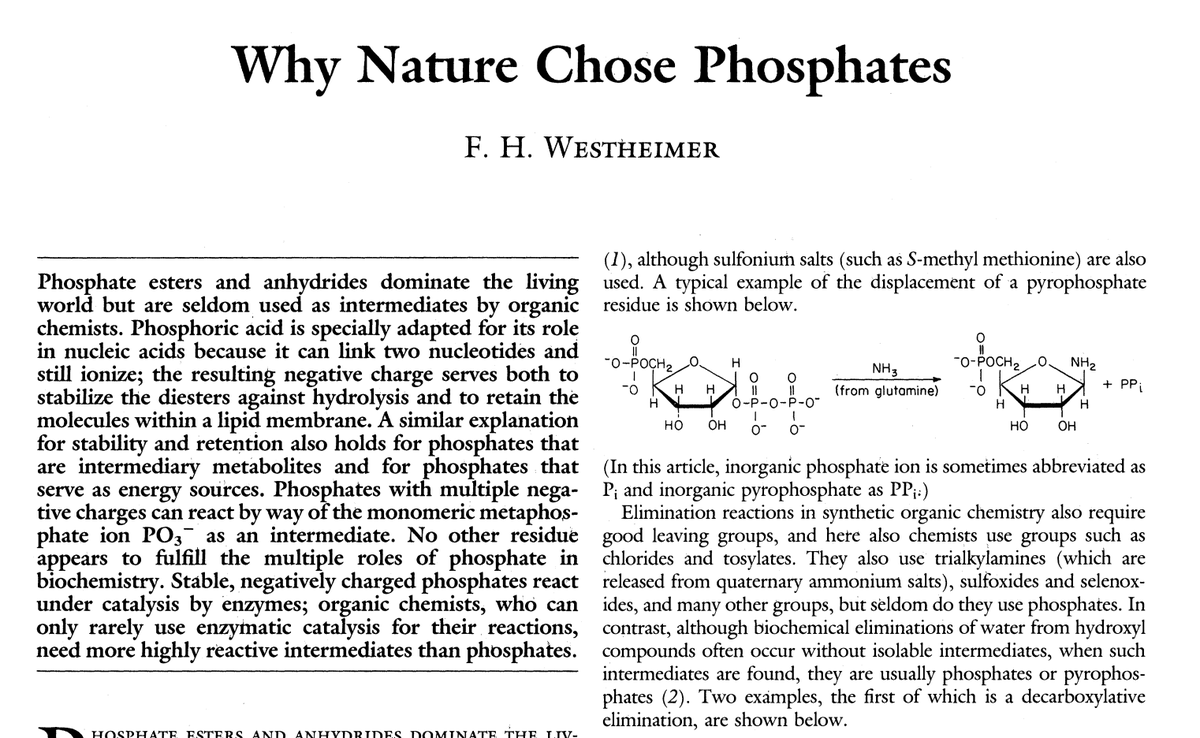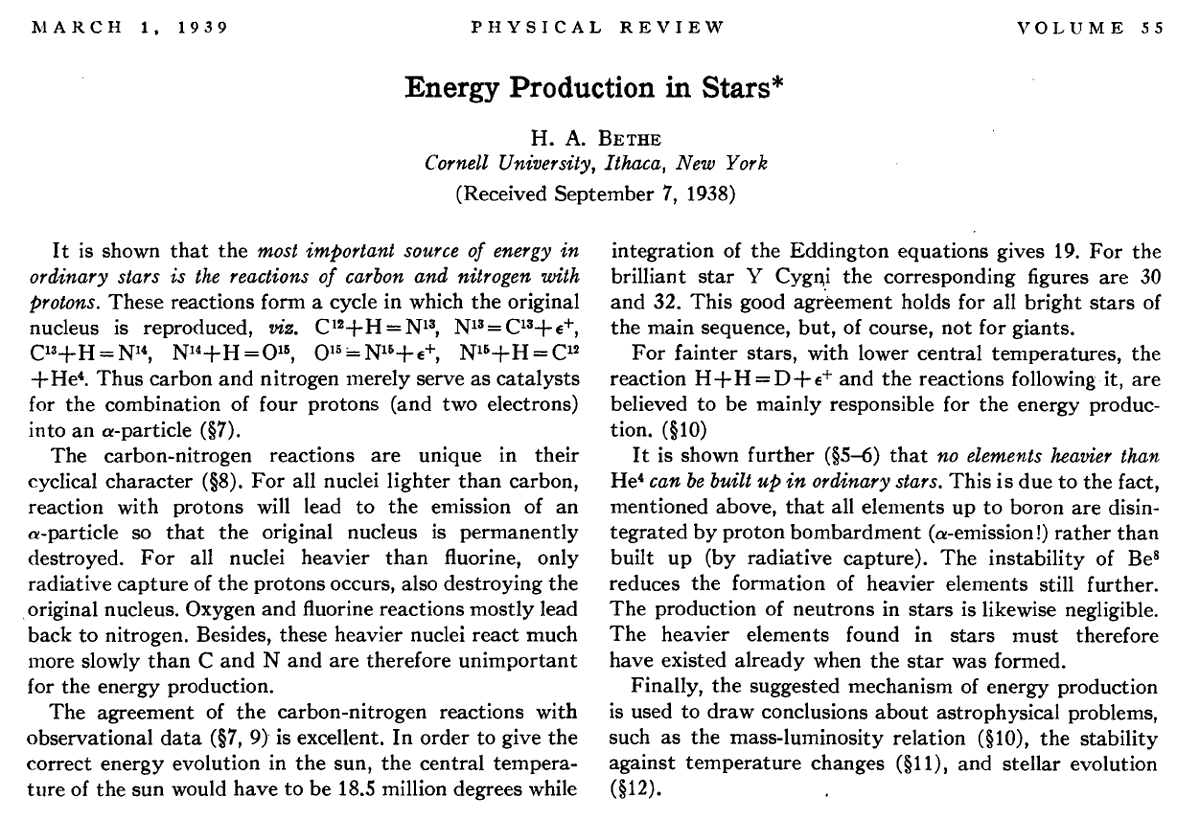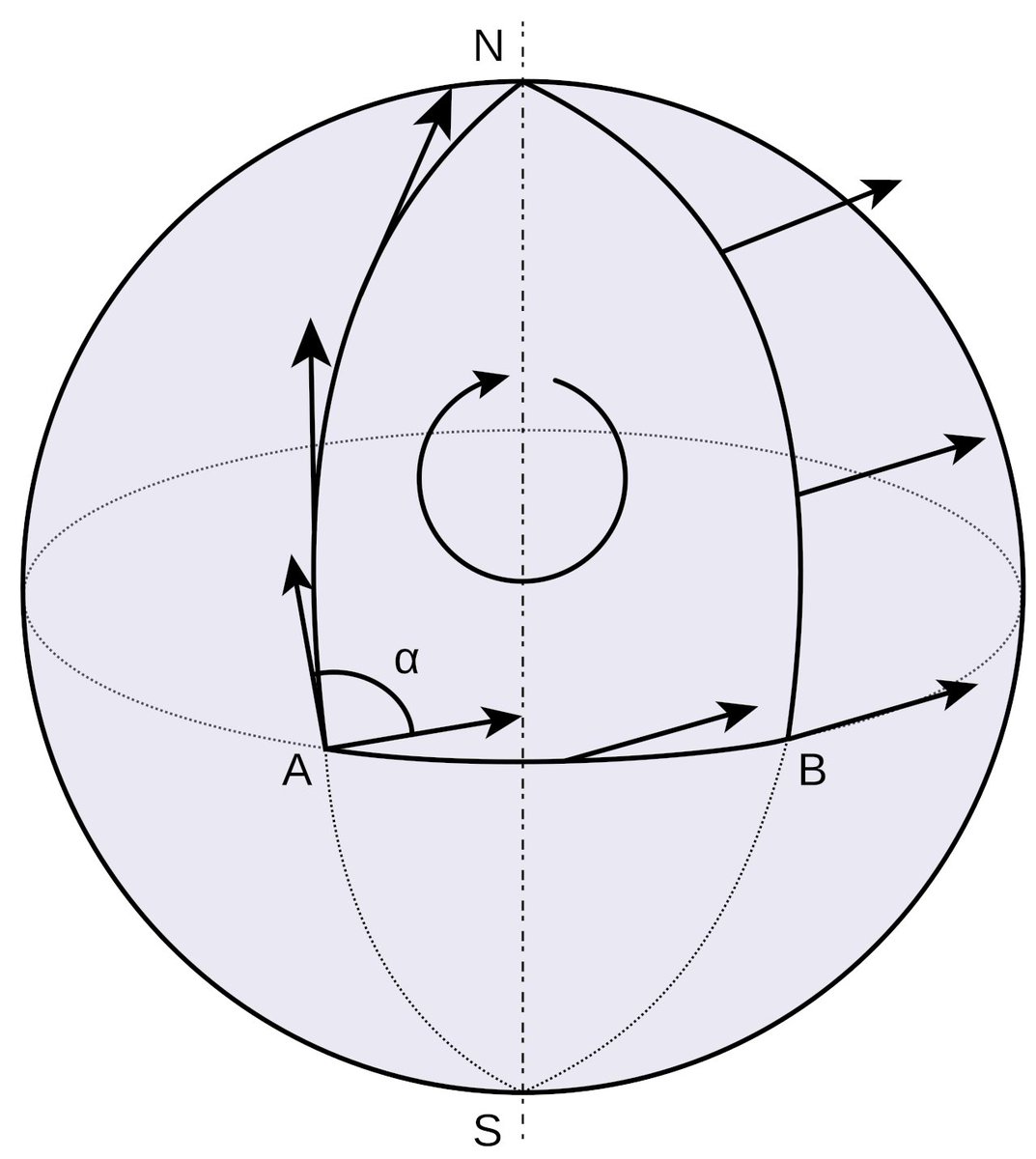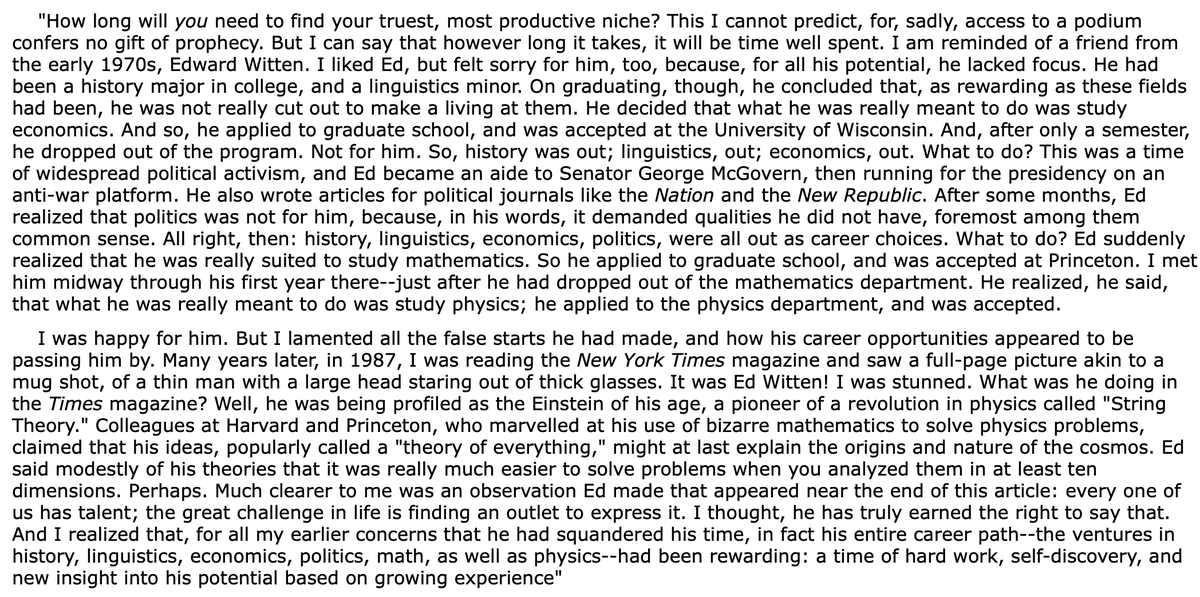1/n: There are some academic papers that are so brilliantly and so accessibly written and so universal in scope that they transcend disciplines and stand as timeless testaments to both great thinking and great writing. Here's a short personal selection:
Paul Krugman on Ricardo's principle of comparative advantage. Somehow Krugman, in explaining one of the subtlest and most interesting ideas in all of economics, manages to cram in brilliant and clear discussions of evolution, philosophy and history web.mit.edu/krugman/www/ri…


Frank Westheimer on why nature chose phosphates: phosphates are ubiquitous in DNA, RNA and other biomolecules. Why these and not sulfates, acetates or any other "ates"? What really jumps out from this paper are Westheimer's brilliantly simple explanations archives.evergreen.edu/webpages/curri…


Bennett on the thermodynamics of computation: Never have I seen anyone marry two disciplines - three if you count the discussions of molecular biology - so brilliantly and simply. IMHO one of the most important disciplinary confluences of the 21st century sites.pitt.edu/~jdnorton/lect…


Freeman Dyson's detailed analysis of how life can survive through thermodynamic optimization in an expanding universe: this paper literally defines the words "audacious" and "creative", and it's not just speculation - Dyson brings hard numbers to the table panspermia.org/revmodphys.51.…


Jack Dunitz on upper limits to the entropic cost of bound water molecules: the best thing about this paper is its length (one page). It's a masterclass in how to use simple calculations to arrive at a universal and useful result. science.org/doi/10.1126/sc…


Fermi, Pasta and Ulam on non-linear problems: This paper exemplifies the "Fermi method" at its most brilliant - take a simple problem, look for simple variations and discover profound, universal laws, in this case the first example of chaos. My piece on it 3quarksdaily.com/3quarksdaily/2…


Philip Anderson's famous "More is Different": I used to literally carry this around all the time in graduate school, in part to explain to physicists why chemistry couldn't be reduced to physics. Anderson captured the very essence of emergence here tkm.kit.edu/downloads/TKM1…


I remember reading this paper in one ecstatic sitting: what I find unique about it is that it probably combines theory and experiment better than any other analysis I know. With it were laid the deep foundations of magnetic resonance. journals.aps.org/pr/abstract/10…


Ken Dill's review of the forces that dictate protein folding. While somewhat outdated, it's an exemplar of pleasurable pedagogy, the kind of paper that makes for great bedside reading. And the basics are still unchanged. pubs.acs.org/doi/10.1021/bi…


Finally, Axelrod and Hamilton's brilliant paper on cooperation: I feel hard-pressed to think of any other paper in biology which draws such far-reaching and universal lessons for all of life based on such simple reasoning and mathematical arguments. websites.umich.edu/~axe/research/…


@readwise unroll
A witty, incisive, wickedly trenchant analysis of systems biology from a master practitioner - Brenner criticizes "the present approach of ‘low input, high throughput, no output’ biology which dominates journals." A must read. royalsocietypublishing.org/doi/10.1098/rs…
Hans Bethe's seminal paper on what makes the sun and stars shine - it's characteristic Bethe: he considers the problem, draws up an exhaustive list of potential solutions and then picks the right one based on the data. Like solving a giant puzzle. journals.aps.org/pr/abstract/10…


Christof Koch's superb analysis of modular complexity in the brain. What I love are his simple combinatorial arguments that make a case not just for understanding the brain but for biological systems as a whole. science.org/doi/10.1126/sc…


William Kaelin's amazing review of pitfalls in cancer target validation is a must-read for cancer researchers and biomedical scientists in general. Kaelin points out very basic and common statistical and methodological traps. Fantastic checklist. nature.com/articles/nrc.2…


I've always loved Lars-Erik De Geer's analysis of how countries could figure out the Teller-Ulam thermonuclear design from the fallout from a nuclear test. Has important scientific as well as geopolitical ramifications. scienceandglobalsecurity.org/archive/1991/1…


• • •
Missing some Tweet in this thread? You can try to
force a refresh














